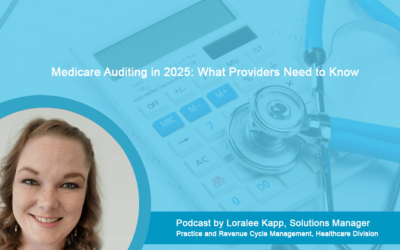At Outsource Strategies International (OSI), we have years of experience in providing anesthesiology medical coding services to ensure error-free code assignment and thus help practices with increased reimbursement. Our AAPC-certified professional coders are well trained in using current and accurate CPT codes as well as modifiers based on the factors involved.
Read Transcript
Hello everyone and welcome to our podcast series. My name is Natalie Tornese and I’m the Senior Group Manager for Outsource Strategies International (OSI). I wanted to take this opportunity to go over coding and billing for anesthesia services.
00:17 Anesthesiology Coding Challenges
Knowing how to code and bill anesthesia services correctly along with the appropriate modifiers is critical to ensure optimal reimbursement. Anesthesiologists face specific coding challenges due to cancelled anesthesia, monitored anesthesia care, failed medical direction, invasive line placement rules, and start/stop times. Every January, new medical billing and coding guidelines and policies come into effect, including coding changes in terms of added, deleted or revised codes.
Let’s take a look at some important considerations for success in anesthesia billing and coding:
00:51 Anesthesia CPT codes
First is the point to know the Codes: As with every medical specialty, reporting the correct anesthesia CPT codes is crucial for proper reimbursement.
I’m going to include a transcript along with this podcast, outlining all CPT and ICD-10 coding.
CPT Codes for Anesthesia Procedures
- Head 00100-00222
- Neck 00300-00352
- Thorax (chest wall and shoulder girdle) 00400-00474
- Intrathoracic 00500-00580
- Spine and Spinal Cord 00600-00670
- Upper Abdomen 00700-00797
- Lower Abdomen 00800-00882
- Perineum 00902-00952
- Pelvis (except hip) 01112-01173
- Upper Leg (except knee) 01200-01274
- Knee and Popliteal Area 01320-01444
- Lower Leg (below knee, including ankle and foot) 01462-01522
- Shoulder and Axilla 01610-01680
- Upper Arm and Elbow 01710-01782
- Forearm, Wrist and Hand 01810-01860
- Radiological Procedure 01916-01936
- Burn Excisions or Debridement 01951-01953
- Obstetric 01958-01969
- Other Procedure 01990-01999
CPT Codes for Bundled Services
- Special anesthesia service 99100
- Anesthesia with hypothermia 99116
- Special anesthesia procedure 99135
- Emergency anesthesia 99140
01:10 Anesthesia Modifiers
Anesthesia services should be billed with an appropriate anesthesia modifier. Modifiers provide additional information about the service or procedure. Not using modifiers correctly can result in denied claims and revenue loss. There are two broad categories of anesthesia modifiers – pricing modifiers and informational modifiers.
Pricing modifiers are assigned based on the number of providers and their roles in the anesthesia service. Pricing modifiers must be submitted in the first position to indicate whether the service was personally performed, medically directed, or medically supervised.
- Anesthesia services performed personally by the anesthesiologist would have the modifier AA
- Medical supervision by a physician, more than 4 concurrent anesthesia procedures would have the modifier AD
- Medical direction of two, three or four concurrent anesthesia procedures involving qualified individuals would have the modifier QK
- Qualified non-physician anesthesiologist service, with medical direction by a physician would have the modifier QX
- Medical direction of one qualified non-physician anesthetist by an anesthesiologist would have the modifier QY
- CRNA service, without medical direction by a physician would have the modifier QZ
Those are the pricing modifiers.
Then there are informational modifiers, which are placed in the second modifier position and are critical for the billing processes, though they do not directly have an effect on reimbursement. For e.g. QS, which is monitored anesthesia care services are reported with anesthesia CPT codes along with actual anesthesia time. Another set of informational modifiers are those used to indicate the patient’s physical status during the anesthesia procedure, for e.g. P1 would be a normal healthy patient and P2 would be a patient with mild systemic disease.
03:24 Anesthesia Billing Guidelines
Follow proper billing guidelines when billing anesthesia include the following for proper reimbursement:
- You’ll select the correct CPT and HCPCS codes
- The number of minutes of administration or time spent on the procedure.
- The start and stop time of the procedure should be documented based on payer rules.
- You’re assigning the appropriate modifier to identify the anesthesia provider.
- Procedure anesthesia codes (00100-01999), those codes should be reported with the appropriate physical status modifier that corresponds to the status of the patient undergoing the surgical procedure.
- If multiple surgical procedures are performed during a single anesthesia administration, you would report only the single anesthesia code with the highest Base Unit Value.
- You would report the appropriate qualifying circumstances codes if applicable along with the anesthesia procedures can result in higher reimbursement.
I hope this helps but always remember that documentation and a thorough knowledge of payer regulations and guidelines is critical to ensure accurate reimbursement for the procedures performed.



